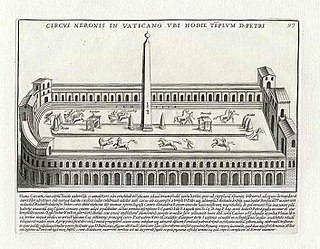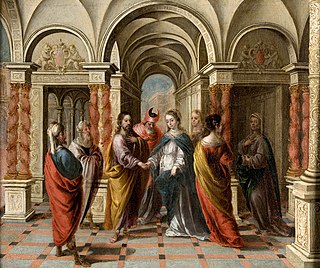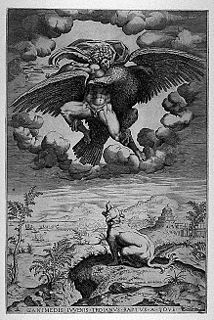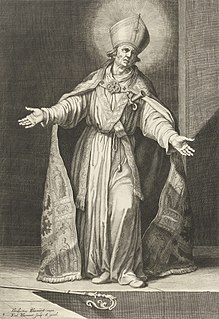Related Research Articles

Engraving is the practice of incising a design onto a hard, usually flat surface by cutting grooves into it with a burin. The result may be a decorated object in itself, as when silver, gold, steel, or glass are engraved, or may provide an intaglio printing plate, of copper or another metal, for printing images on paper as prints or illustrations; these images are also called "engravings". Engraving is one of the oldest and most important techniques in printmaking. Wood engraving is a form of relief printing and is not covered in this article.

Francesco Bartolozzi was an Italian engraver, whose most productive period was spent in London. He is noted for popularizing the "crayon" method of engraving.

Uranometria is a star atlas produced by Johann Bayer. It was published in Augsburg in 1603 by Christoph Mangle under the full title Uranometria: omnium asterismorum continens schemata, nova methodo delineata, aereis laminis expressa. This translates to "Uranometria, containing charts of all the constellations, drawn by a new method and engraved on copper plates". The word "Uranometria" derives from Urania, muse of the heavens and "uranos" (oυρανός) the Greek word for sky / heavens. A literal translation of "Uranometria" is "Measuring the Heavens".

Pietro Santi Bartoli was an Italian engraver, draughtsman and painter.

Antonio Tempesta, also called il Tempestino, was an Italian painter and engraver, whose art acted as a point of connection between Baroque Rome and the culture of Antwerp. Much of his work depicts major battles and historical figures.
Indian copper plate inscriptions are historical legal records engraved on copper plates in India.

Francesco Brizio (1574–1623) was an Italian painter and engraver of the Bolognese School, active in the early-Baroque.

John Sturt was an English engraver, apprenticed to Robert White. Becoming associated with John Ayres, he engraved the most important of his books on calligraphy. He is popularly known as an illustrator of The Pilgrim's Progress.

Samuel William Reynolds was a mezzotint engraver, landscape painter and landscape gardener. Reynolds was a popular engraver in both Britain and France and there are over 400 examples of his work in the National Portrait Gallery, London.

Matias de Arteaga, also Matías de Arteaga y Alfaro, was a Spanish painter and engraver.

Charles Audran (1594–1674) was a French engraver.
Dominique Barrière (c.1622–1678) was a French painter and engraver.

All Religions are One is a series of philosophical aphorisms by William Blake, written in 1788. Following on from his initial experiments with relief etching in the non-textual The Approach of Doom (1787), All Religions are One and There is No Natural Religion represent Blake's first successful attempt to combine image and text via relief etching, and are thus the earliest of his illuminated manuscripts. As such, they serve as a significant milestone in Blake's career; as Peter Ackroyd points out, "his newly invented form now changed the nature of his expression. It had enlarged his range; with relief etching, the words inscribed like those of God upon the tables of law, Blake could acquire a new role."

Nicolas Béatrizet was 16th century French engraver, working in Rome.

Jakob Binck was a German engraver, etcher, painter, medalist, copyist and art dealer. He was a peripatetic artist who worked for various courts in Northern Europe, especially the Danish court, and also resided in Antwerp for a while. As an engraver he is counted as a peripheral member of the Little Masters group.

Frederik Bloemaert was a Dutch printmaker and draftsman.

Schelte a Bolswert (1586–1659) was a leading Dutch engraver, noted for his works after Rubens and Van Dyck.

P. Jean-Baptiste Bradel, a French draughtsman and engraver, was born in Paris about 1750. He was chiefly employed in engraving portraits, which are neatly executed, and which include the following plates:
Arnold de Jode, the son of Pieter de Jode, the younger, was born at Antwerp in 1638. He was instructed in engraving by his father, but he never rose above mediocrity. He worked in the Netherlands and in Spain, and was in England in 1666, the year of the Great Fire of London, and in 1667. His best prints are portraits, though they are but indifferent. Among other plates, the following are by him:
Paul Fourdrinier, sometimes referred to as Peter or Pierre Fourdrinier, was an 18th-century engraver in England.
References
- ↑ Bryan, Michael (1889). Walter Armstrong; Robert Edmund Graves (eds.). Dictionary of Painters and Engravers, Biographical and Critical. Vol. II L-Z. London: George Bell and Sons. p. 676.